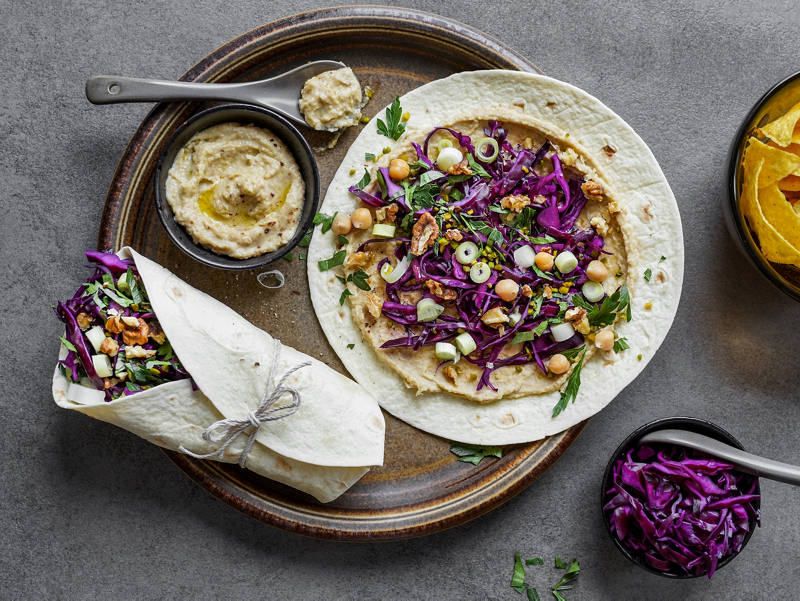Red cabbage is healthy and scores highly

Native, low in calories and extremely healthy: there is much to be gained from the variety that red cabbage provides. After all, the locally grown nutrient-rich winter vegetable is inexpensive, filling and so much more than just its traditional version.
A superpower all year
Cabbage, which belongs to the cruciferous vegetables, grows from August to November practically on our doorstep. Especially in the colder season, when the range of regional vegetables is smaller, this winter vegetable is an outstanding source of nutrients. But thanks to early and medium-early varieties and the fact that it stores well, cabbage is available practically all year round. In the refrigerator, whole red cabbage will keep for up to three weeks. Once cut, it should be wrapped in plastic wrap and used within a few days.
What makes red cabbage so healthy?
With regard to nutrients, red cabbage, compared to the related white cabbage, rates much higher in one aspect: its content of valuable antioxidants. The strong red-purple colour of red cabbage comes from the secondary plant substances anthocyanins. These are particularly effective antioxidants that attack free radicals and combat chronic inflammatory processes. They also have antibacterial and antiviral properties. But this isn't the end of the great health-enhancing potential that red cabbage holds.
Other important nutrients
-
Vitamin C keeps the immune system on its toes and helps ward off pathogens. Raw cabbage often contains even higher amounts of vitamin C than citrus fruits.
-
Vitamin E is an antioxidant and can help prevent the development of cardiovascular diseases (e.g. arteriosclerosis).
-
Iron secures a good supply of energy and oxygen to the cells.
-
Vitamin K and calcium ensure healthy bone metabolism.
-
Carotenoids protect the eyes by binding free radicals and preventing damage to the retina.
The multiple talents of mustard oil glycosides
The mustard oil glycosides contained in cabbage, which are responsible for its typical tangy taste, are talented in many ways: researchers are currently investigating the effect of sulforaphane against cancer. The antioxidant is said to inhibit the growth of cancer cells and boost the effect of chemotherapeutic agents.
Red cabbage is versatile
One thing is clear: red cabbage definitely deserves a better reputation than «the boring side-dish». The valuable vegetable not only goes well with game, but also tastes particularly good in vegetarian and vegan recipes and its strong red colour is an instant eye-catcher. Whether raw and finely grated in a salad bowl or fajita, or baked in a delicious vegetable lasagne – creative cooks will find there are endless ways of using this all-purpose vegetable.
Facts about the colour
The pH value changes the colour of the cabbage. Depending on the colour you want your dish to be, the following 2 points should be considered:
- By adding acid e.g. from apple, the cabbage becomes redder.
- With the addition of alkali e.g. a little sodium bicarbonate, the cabbage becomes bluer.
You will be full – but not fat
With its high water content – at a good 90% – red cabbage is very low in calories and fat. And provided it’s not eaten with a fatty chop or a hearty roast, it can do a lot to help you slim! This is due to the fibre it contains, which is able to absorb a lot of water. This leads to an increase in volume in the gastrointestinal tract without an increase in energy value. As a result, we feel satisfied more quickly and more strongly. In addition, the fibre delays the emptying of the stomach, which causes blood sugar levels to rise more slowly, preventing ravenous hunger attacks.
Our intestinal health also benefits from the positive effects of indigestible fibre, as the swollen fibre stimulates the muscles in the intestines. This enables the body to regulate digestion naturally and prevent constipation. It is therefore particularly important to drink enough fluids so that the fibre can swell easily and doesn't have the opposite effect.



